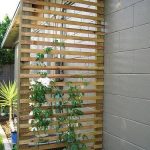Interested in landscaping tropical gardens ideas? Tropical gardens are known for their lush greenery, vibrant flowers, and exotic appeal. In this article, we will explore the beauty of tropical plants and provide design inspiration for creating your own stunning tropical garden.
When it comes to landscaping tropical gardens, one of the key elements is choosing the right plants that thrive in your specific climate. We will discuss how to select and incorporate tropical plants that will flourish in your region, whether you live in a hot and humid environment or a cooler coastal area.
In addition to plant selection, we will also provide ideas for creating a focal point in your tropical garden, such as adding stunning features like waterfalls, statues, or vibrant flower beds. We will also cover tips on maximizing space in both small and large tropical garden areas and incorporating hardscaping elements like pathways and decks to complement the lushness of tropical plants. Get ready to be inspired to transform your outdoor space with the allure of a tropical oasis.
Choosing the Right Plants
When it comes to landscaping tropical gardens, choosing the right plants is crucial to ensure their success and thrive in your specific climate. Tropical plants are known for their lush foliage, vibrant flowers, and exotic look, but not all of them will thrive in every climate. Here are some tips on how to select and incorporate tropical plants that will flourish in your garden:
- Research Your Climate: Before selecting tropical plants for your garden, research your specific climate zone. Determine the average temperature range, humidity levels, and sunlight exposure in your area. This will help you narrow down the tropical plant species that are more likely to thrive in your garden.
- Consider Native Varieties: Look for tropical plants that are native to your region or similar climates. Native varieties are naturally adapted to the local conditions, making them easier to care for and more likely to thrive. Some examples of native tropical plants include bird of paradise (Strelitzia reginae) in southern California and cabbage palm (Sabal palmetto) in Florida.
- Choose Low-Maintenance Options: If you’re new to landscaping tropical gardens or have limited time for maintenance, opt for low-maintenance tropical plants. Some easy-to-care-for options include philodendrons, pothos, spider plants, and peace lilies.
Incorporating the right tropical plants into your garden can create a lush oasis filled with color and texture. By considering your specific climate, choosing native varieties, and selecting low-maintenance options, you can create a stunning tropical garden that thrives year-round with minimal effort.
Creating a Focal Point
When it comes to landscaping tropical gardens, creating a focal point is essential to make the space visually stunning and inviting. There are many ways to add stunning features that will enhance the beauty of your tropical garden, from waterfalls to statues and vibrant flower beds.
Water Features
One popular option for creating a focal point in a tropical garden is the addition of water features such as fountains, ponds, or waterfalls. The sound of running water and the visual appeal of a serene pond can add a relaxing touch to your garden, making it the perfect place for unwinding after a long day.
Statues and Sculptures
Another way to create a focal point in your tropical garden is by incorporating statues or sculptures. Whether you choose classic Greek-inspired statues or modern abstract art pieces, adding these elements can bring an artistic flair to your outdoor space and make it more visually interesting.
Vibrant Flower Beds
Incorporating vibrant flower beds is an excellent way to add color and texture to your tropical garden. Choose flowers with bold hues like reds, oranges, pinks, and purples to create eye-catching displays throughout your garden. You can also mix different types of flowers with contrasting shapes and sizes for added visual interest.
By incorporating these stunning features into your landscaping tropical gardens ideas, you can create a captivating outdoor space that will be sure to impress guests while providing you with a peaceful oasis at home.
Maximizing Space
When it comes to landscaping tropical gardens, maximizing space is essential for creating a lush and inviting oasis. Whether you have a small backyard or a large garden area, there are several tips and tricks that can help you make the most out of your tropical paradise.
Utilize Vertical Space
One of the best ways to maximize space in a tropical garden is by utilizing vertical space. Consider adding trellises, hanging planters, or tall potted plants to create layers of greenery and add visual interest. This not only adds more greenery to your garden but also creates depth and dimension, making a small space feel larger.
Create Intimate Seating Areas
No matter the size of your tropical garden, creating intimate seating areas can help maximize the use of space. Incorporate cozy outdoor furniture, such as benches, bistro sets, or hammocks, surrounded by lush foliage to create inviting nooks where you can relax and enjoy the beauty of your tropical paradise.
Use Mirrors to Create Illusions
For smaller tropical garden areas, using mirrors strategically can create the illusion of depth and space. Place mirrors on walls or fences to reflect the greenery and make the garden appear larger than it actually is. This simple trick can visually expand your tropical garden and make it feel more expansive.
By incorporating these tips for maximizing space in your tropical garden, you can turn even the smallest areas into a vibrant and luxurious oasis. With careful planning and creative design ideas, you can make the most out of any size tropical garden and create a stunning outdoor retreat.
Incorporating Hardscaping
When it comes to landscaping tropical gardens, incorporating hardscaping is a crucial element in achieving a balanced and visually appealing outdoor space. Hardscaping refers to the design and implementation of non-living elements such as pathways, decks, and other structures that enhance the overall landscape. In the context of tropical gardens, hardscaping serves to complement the lushness of tropical plants and create a harmonious environment.
One of the key considerations when incorporating hardscaping in a tropical garden is to ensure that the design elements seamlessly blend with the natural surroundings. For pathways, using materials like natural stone or gravel can add visual interest while providing functional walkways throughout the garden. Additionally, integrating wooden decks or pergolas can provide shaded areas for relaxation and entertainment, while also adding an organic feel to the outdoor space.
In terms of other structures, features such as decorative arbors or trellises can be used to support climbing tropical vines or flowering plants, adding vertical interest and visual appeal to the garden. When considering these hardscape elements, it’s important to keep in mind that they should not overshadow the beauty of the tropical plants but instead enhance their natural splendor.
| Element | Example |
|---|---|
| Pathways | Natural stone walkways |
| Decks | Wooden deck with seating area |
| Trellises | Climbing tropical vines supported by decorative trellis |
Color and Texture
When it comes to landscaping tropical gardens, one of the most important elements to consider is the use of vibrant colors and varied textures. Tropical gardens are known for their lushness and vibrancy, and utilizing a wide range of colors and textures can help create a captivating and visually stunning outdoor space.
Incorporating vibrant floral displays in a variety of hues such as reds, pinks, yellows, and oranges can add an instant pop of color to your tropical garden. You can achieve this by choosing flowers like hibiscus, bougainvillea, or orchids, which are not only visually appealing but also thrive in tropical climates. Additionally, adding plants with different leaf shapes and sizes can contribute to the overall texture of the garden, creating visual interest and depth.
To further enhance the color scheme in your tropical garden, consider incorporating ornamental foliage plants with striking variegated patterns or unique leaf shapes. These plants can serve as focal points or accents throughout the garden, adding layers of visual interest that complement the vibrant blooms.
When designing a tropical garden with color and texture in mind, it’s essential to consider how these elements will evolve throughout the seasons. By selecting a variety of plants that bloom at different times of the year, you can ensure that your garden remains colorful and vibrant year-round.
| Colorful Flowers | Variegated Foliage |
|---|---|
| Hibiscus | Croton |
| Bougainvillea | Calathea |
| Orchids | Dieffenbachia |
Maintenance Tips
Maintaining a tropical garden requires consistent care and attention to keep it thriving all year long. Here are some tips on how to care for and maintain your tropical garden:
1. Regular watering: Tropical plants need regular watering to thrive, especially during the dry season. Be sure to water your garden deeply and thoroughly, allowing the water to penetrate the soil and reach the roots of the plants.
2. Fertilization: Keep your tropical garden healthy by regularly fertilizing the soil with a balanced fertilizer. You can also use organic compost to nourish the soil and provide essential nutrients for plant growth.
3. Pruning and trimming: Regular pruning and trimming are essential for maintaining the overall health and shape of tropical plants. Remove any dead or damaged foliage, as well as any overgrowth that may be inhibiting airflow or sunlight.
4. Pest control: Keep an eye out for common pests that can affect tropical plants, such as aphids, mealybugs, and scale insects. Use natural remedies or environmentally friendly pesticides to control pests without harming the ecological balance of your garden.
5. Mulching: Applying a layer of mulch around your tropical plants can help retain moisture, suppress weeds, and regulate soil temperature. Use organic materials such as wood chips, shredded leaves, or peat moss for effective mulching.
6. Protection from extreme weather: Tropical gardens may need protection from harsh sun, strong winds, or heavy rain. Consider installing shade structures or using temporary coverings during extreme weather conditions to protect delicate plants.
By following these maintenance tips, you can ensure that your tropical garden remains lush and vibrant all year long.
Sustainable Tropical Gardening
In conclusion, landscaping tropical gardens offers a myriad of opportunities to create lush, vibrant outdoor spaces that evoke the feeling of paradise. By incorporating the right plants, focal points, hardscaping elements, and attention to color and texture, you can design a stunning tropical garden that showcases the beauty of nature. Maximizing space is key in both small and large areas, and with thoughtful planning, any outdoor space can be transformed into a tropical oasis.
When considering sustainable practices in landscaping tropical gardens, using native plants and implementing water conservation techniques are essential. Native plants are well-adapted to the local climate and require less maintenance, making them an eco-friendly choice. Additionally, incorporating water-efficient irrigation systems and utilizing rainwater harvesting can help reduce water usage in your tropical garden.
As you embark on your journey to create a beautiful tropical garden, it’s important to consider not only the aesthetic aspects but also the long-term sustainability of your landscape. With careful planning and mindful choices, you can bring your landscaping tropical gardens ideas to life while contributing to a healthier environment for future generations to enjoy.
Frequently Asked Questions
How Do You Plan a Tropical Garden Layout?
Planning a tropical garden layout involves considering the natural conditions of your location, such as sunlight, soil type, and climate. Incorporating plants with big, bold leaves and vibrant flowers can create that lush, tropical feel.
What Tropical Plants Look Good Together?
When choosing tropical plants to complement each other in a garden, consider their height, texture, and color. For example, pairing palms with colorful bromeliads or ornamental grasses can create a visually stunning combination that mimics the look of a natural tropical environment.
How Can I Make My Yard Look Tropical?
To make your yard look more tropical, start by incorporating lush greenery and vibrant flowers. Consider adding palm trees or banana plants for a dramatic effect. Adding water features like fountains or small ponds can also enhance the tropical ambience of your yard.
Pay attention to landscaping details such as creating meandering pathways or using decorative rocks and pebbles to add interest and texture to the space. Lastly, consider adding outdoor furniture and accessories that evoke a relaxed resort-like feel.

Welcome to my gardening blog! I am passionate about plants and enjoy sharing my knowledge and experiences with others. In this blog, I will write about everything related to gardening, from tips on how to get started to updates on my own garden projects.





